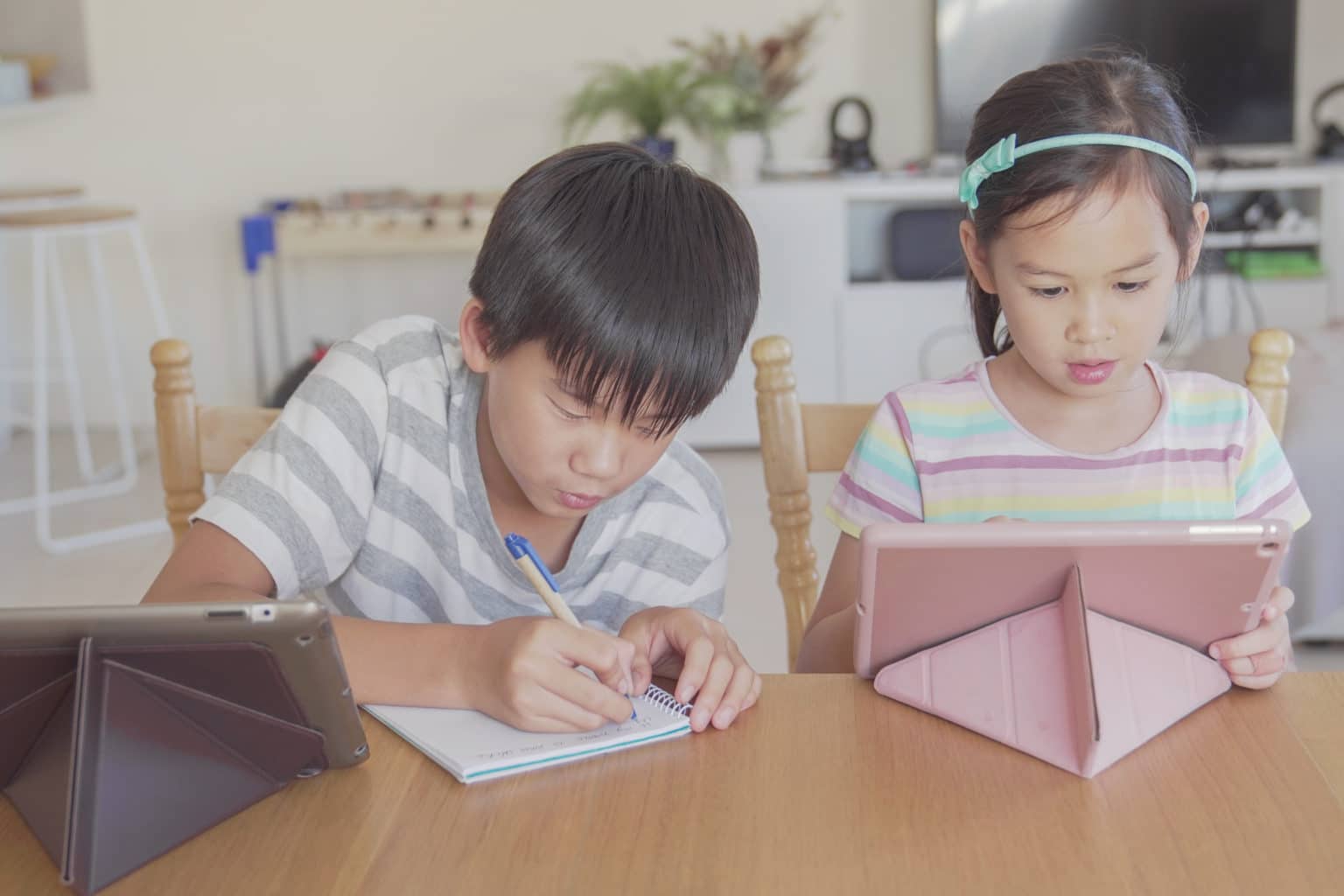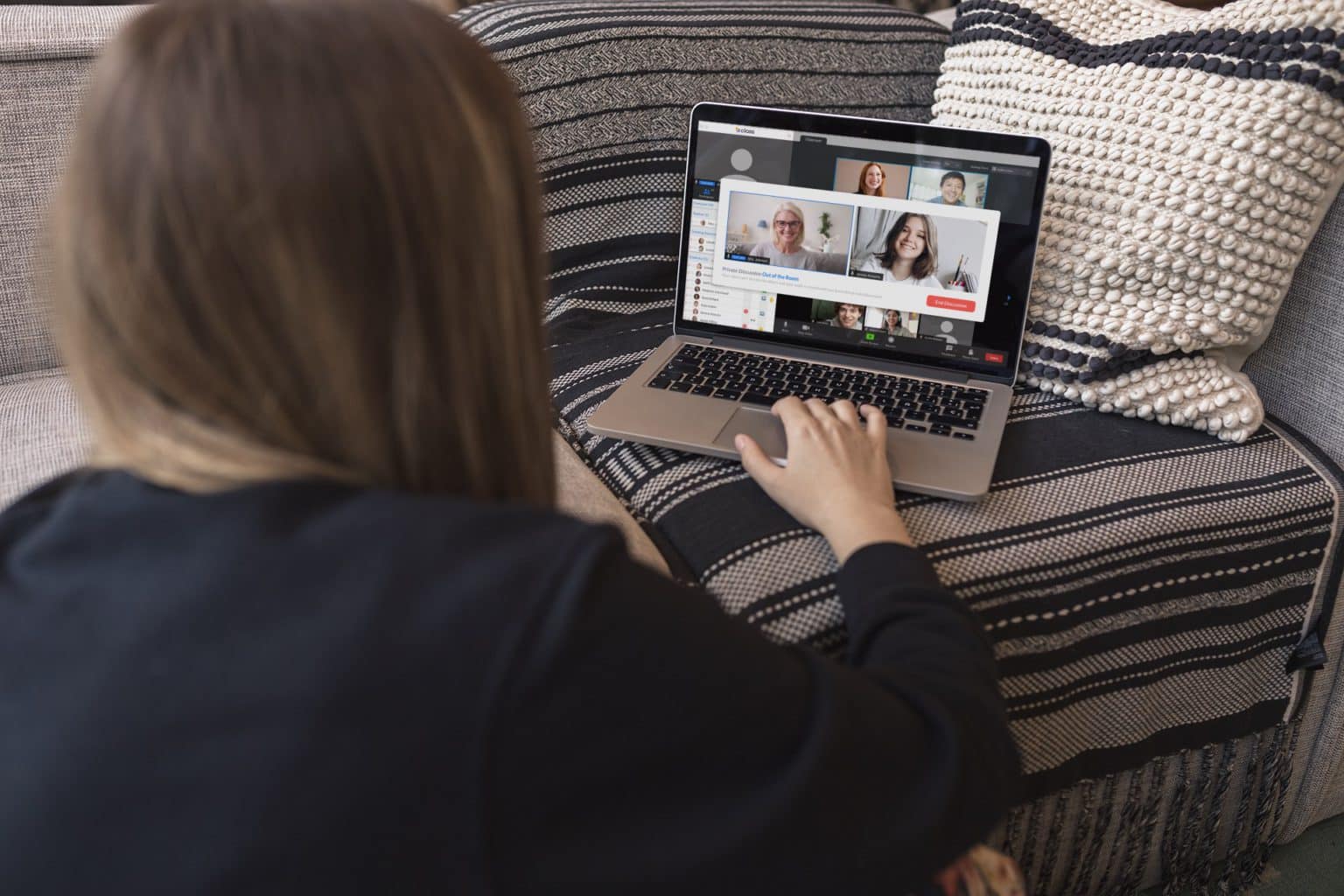
Class is the next generation virtual classroom for K-12, higher education, government agencies, and the workplace. Contact us today to schedule your live demo and see Class in action.

Class is the next generation virtual classroom for K-12, higher education, government agencies, and the workplace. Contact us today to schedule your live demo and see Class in action.

In March 2020, students across America suddenly had something in common—they all found themselves unexpectedly learning from home, remotely, in a virtual environment as the nation responded to the rapid emergence of COVID-19. But that’s where the similarity stopped. While all students were forced to work from home, not all students had similar home-life experiences or settings. Additionally, student access to technology could be wildly inequitable.
We wanted to gather some insights from those in the trenches about how they have adapted to the new virtual, or hybrid, learning situation and steps they’re taking to ensure student access to technology. Dr. Kim Oppelt, Director of Advocacy & Community at Class, recently led a panel discussion about access in online education. Participants included:
Each of the members of our panel represent different districts and deal with different system sizes and demographics. Yet many of their experiences have been similar, particularly when it comes to learning to work with new technology solutions in order to make virtual learning possible during the pandemic.

It’s fair to say that all students have suffered to a certain degree from the disruption caused by the pandemic and the move to remote or hybrid learning. Initially, school districts faced challenges related to ensuring students’ access to technology and Wi-Fi that would allow them to learn from home.
It is students of color, along with those from lower-income backgrounds or in troubled home environments, who have suffered the most. The situation has resulted in a heightened focus on equitable access to technology in education — both now and in the future — and has prompted greater awareness of the challenges that many families face.
Lack of internet access for students was a huge hurdle. During the discussion, McGuire noted that, at the beginning of the pandemic more than 110,000 of the district’s 355,000 students did not have internet connectivity. That was an immediate challenge, and critical need, that the district worked quickly to address by providing hotspots for students through a collaborative effort between the school system and the community. “It’s been difficult, but it’s definitely moving in the right direction,” he says.
Walker pointed out that student access to online learning went beyond just having internet access. For instance, for many families, multiple people were learning or working from home at the same time, slowing down Wi-Fi performance.
The learning curve for both students and teachers was steep at first, but these and other school systems quickly rose to the challenge. They learned a lot through the process.
“One thing that I learned throughout this process is to slow down and listen,” Walker shared. “Listen to students. Listen to families. If we ask the right questions, they’ll give us the information, and then it’s our duty to go out and find out how to deliver that information to them.”
That listening and learning weren’t entirely related to the delivery of classes. School systems have also reached out to find out how families were doing. In Minneapolis, says Walker, this has involved “just reaching out and calling students, calling families, and having conversations about ‘how are you doing?’ ‘How are you finding ways to stay active? How are you finding ways to find some space?’ And just really being intentional about doing that.”
Systems have also learned how to adapt and be comfortable with ambiguity and an uncertain future state.
As Flama said: “One of the things we learned is that we can be nimble.” The school system rolled out its laptop initiative within just a few months. But, Flama admits, “just because technology is in a student’s hard doesn’t mean that their specific needs are being met.” That, she said, has been a challenge.”
In responding to the crisis school systems have come together with communities and other collaborators to meet the needs of students without access to technology.
“We have partners that were coming to us saying ‘we can help,’” McGuire said. For his school district, this has involved partnering with local television stations who offered to give them on-air time to deliver some of their lessons. “We repackaged a lot of what we had and made it available for broadcast,” he says. One channel offered the information entirely in Spanish. These and other partnerships have been very important, he said.
As they look to the future these administrators are looking forward to a time when they will be fully face-to-face, but also recognize the value that distance learning, made possible by technology, will hold for them. In particular, they see a place for technology in providing training for teachers and other staff.

“I would love to be able to see us have a few days a year where we’re going to be completely online,” said McGuire. “That would probably be a good idea so that we could keep everybody acclimated to the technologies, to the delivery, keep investing in their professional development so they can be more successful in this environment.”
They’ve come a long way over the past year and they’re proud of the accomplishments they’ve made.
“I’m really, really proud that we’re able to make some big changes that I hope will be lifelong changes from what we’ve learned this year,” Slama said.
“Hopefully, we can find ways that students won’t have to miss any learning, even though they may have been removed from school,” Walker said. “How do we utilize the technology that we have to make sure they still get that learning, and that they’re connected to their teachers and get that instruction on a day-to-day basis.”
That’s where tools like Class come into play; it’s proving to be a top go-to resource for school systems of all kinds and students at all levels of instruction.

As students moved online, teaching became much more difficult. Even simple things like taking attendance, giving a quiz, or working in small teams became a challenge for both teachers and students. Class has taken a deep look at the traditional disadvantages of online learning and found ways to make the virtual classroom more interactive, more engaging and more responsive to the needs of students. It’s brought together all of the best features of the classroom and put them on top of Zoom—a technology that students and teachers were to some extent already familiar with.
In the process, and over the past year, we’ve thought long and hard about what the future holds for the virtual classroom. And, specifically, we’ve thought about how the virtual environment and student access to technology impact equity in school and beyond.
To hear more of McGuire, Slama and Walker’s perspectives, we invite you to listen to the webinar.

Class is the next generation virtual classroom for K-12, higher education, government agencies, and the workplace. Contact us today to schedule your live demo and see Class in action.

Class is the next generation virtual classroom for K-12, higher education, government agencies, and the workplace. Contact us today to schedule your live demo and see Class in action.
Get our insights, tips, and best practices delivered to your inbox

Sign up for a product demo today to learn how Class’s virtual classroom powers digital transformation at your organization.

Features
Products
Integrations